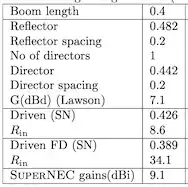Different metals have different conductivity, so changing the metal can affect antenna performance. The higher resistance of non-copper will decrease the efficiency of the antenna. (Although aluminum is also highly conductive, but the diameter is larger for the same conductivity.) Also, the different conductivity changes the effective diameter of the elements and some antenna models are more sensitive to element diameter than others, although this can be compensated for in the antenna design if it is an issue.
Overall, both of these effects are small and generally won't prevent the antenna from working, but if the antenna is very tightly designed, it may matter for the intended performance level of the antenna.
A bigger issue is mechanical. It is not unusual to use steel for structural support, and then plate with copper for greater efficiency since skin effect causes only the outside of the elements to matter. Copper clad steel wire is very commonly used to make antennas. However, for large tubes, bare steel is probably fine as long as the high resistance isn't a problem.
Corrosion is also a big deal. If you mix metals in the antenna, you need to understand which metals will become sacrificial anodes and make sure that corrosion of those metals won't be a problem, otherwise the antenna will not last long. This is most critical for selecting screws that hold the antenna together. (If a screw becomes a sacrificial anode, it will be gone soon!)
For numerical comparison (by volume), Gold is about 45% less conductive than copper, and aluminum is 57% less conductive. Iron is 477% less conductive, and steel is worse.
